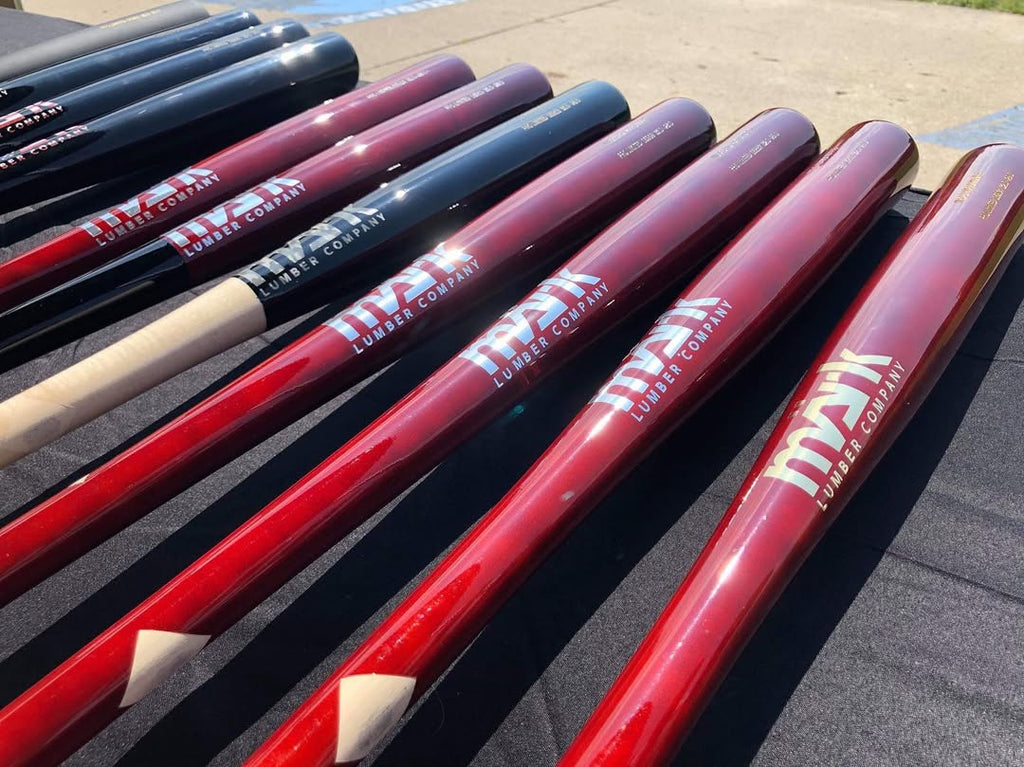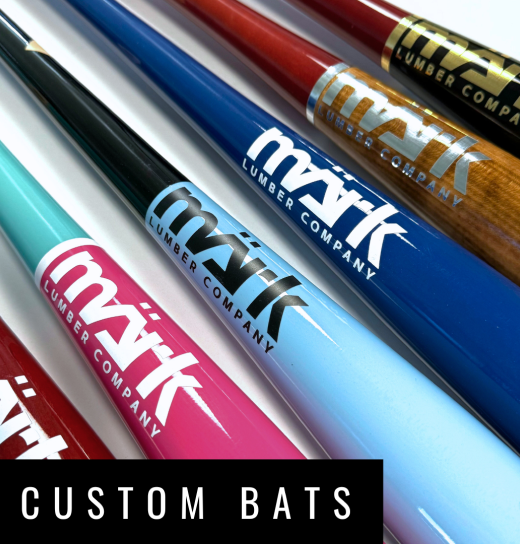
What does an Ink Dot on Baseball Bats Mean?
Baseball enthusiasts, budding players, and collectors alike often wonder about the tiny ink dot that appears on high-quality wood baseball bats. What does this dot signify? Is it just a mark of branding, or does it serve a functional purpose? In this detailed guide, we’ll unravel the mystery behind the ink dot, its history, importance, and what it reveals about your wood bats. Let’s step up to the plate and dive in.
The Origins of the Ink Dot Test
To understand the ink dot’s purpose, we must revisit the evolution of wood baseball bats. Decades ago, manufacturers and professional leagues needed a way to ensure the wood’s grain was straight and robust enough to withstand high-speed pitches and powerful hits. The ink dot test emerged as a simple yet effective quality check.
This dot isn’t random; it’s part of an official standard set by Major League Baseball (MLB) for wood bats used in professional games. Since 2009, MLB has mandated that all maple and birch bats must display this ink dot, signifying they’ve passed a crucial grain slope test.
By applying a drop of ink on the bat’s handle, craftsmen reveal the wood’s natural grain lines. If these lines run parallel along the handle, the bat is less likely to splinter or shatter, ensuring player safety and performance consistency. It’s a tiny mark with a big responsibility.
Why Straight Grain Matters for Wood Baseball Bats
The strength of wood baseball bats largely depends on the grain’s alignment. When you swing at a 95-mph fastball, you need to trust that your bat won’t betray you mid-swing. Here’s why straight grain is vital:
Durability: Straight grain reduces weak points in the bat, minimizing cracks and breaks.
Consistency: Predictable grain means consistent hitting power across the barrel.
Safety: Misaligned grain increases the risk of shattering, which can send shards flying toward players and fans.
The ink dot test is a quick way to verify this alignment visually. For pro-level wood bats, grain deviation must not exceed 3 degrees. This strict standard ensures only the best wood makes it onto the field.
How the Ink Dot Test Is Performed
Ever wondered how that tiny dot works its magic? The process is surprisingly simple yet incredibly telling:
Preparation: The bat’s handle area is sanded smoothly.
Ink Application: A drop of black ink is placed on the handle, usually about 12 inches from the knob.
Capillary Action: The ink spreads along the wood fibers, making the grain lines highly visible.
Measurement: Craftsmen use a protractor or a special gauge to measure the angle of the grain lines relative to the bat’s length.
If the grain lines wander more than 3 degrees off center, the bat may not pass for pro use. However, this doesn’t mean it’s worthless—many slightly imperfect wood bats find new life in amateur leagues or batting practice.
Which Wood Bats Require an Ink Dot?
Not all wood baseball bats bear the ink dot. The rule applies primarily to hard maple and birch bats. Why?
Maple: Dense and hard, maple bats are prone to shattering if the grain is misaligned. The ink dot ensures that only straight-grain maple makes the cut.
Birch: More flexible than maple but still requires careful grain alignment for durability.
Ash: Interestingly, ash bats typically don’t require an ink dot. Ash has an open grain structure that’s easily visible without ink.
If you see an ink dot on your maple or birch bat, it’s a stamp of quality, showing the manufacturer follows MLB’s strict safety protocols.
The Science Behind the Ink Dot and Wood Fiber
The ink dot test leverages a basic principle of wood anatomy: capillary action. When ink touches the bat’s surface, it naturally travels along the micro-channels of the wood fibers. This reveals the grain’s path inside the wood without cutting it open.
This simple physics trick helps makers identify hidden weaknesses. It’s especially crucial for wood bats since unseen twists or deviations can cause catastrophic breakage under stress. The ink dot test acts like an X-ray for bat makers, ensuring your bat’s strength isn’t just skin deep.
How to Read an Ink Dot on Your Wood Bats
Owning wood baseball bats with an ink dot means you can learn a lot about their quality. Here’s a quick guide to reading the dot and the grain lines:
Placement: The dot is usually about 12 inches from the bat’s knob.
Lines: Look at how the ink highlights the grain lines around the dot.
Angle: Ideally, these lines should run nearly parallel to the length of the bat. A gentle 2–3 degree tilt is acceptable for pro bats.
Consistency: Check that the grain runs straight both above and below the dot. Sudden curves can weaken the bat’s handle.
This simple check can help you compare multiple wood bats when shopping for your next game bat.
Misconceptions About the Ink Dot
The ink dot often sparks myths among new players and collectors. Let’s bust a few common ones:
Myth 1: All bats have an ink dot. Not true! Only pro-grade maple and birch bats require it. Many youth or amateur wood bats don’t feature it.
Myth 2: The dot is a logo or trademark. Nope—it’s purely functional, not decorative branding.
Myth 3: An Ink dot means unbreakable. While it shows high grain quality, even the best wood baseball bats can break under extreme conditions. Proper care and hitting technique still matter.
Understanding what the dot does and does not guarantee helps you choose and maintain your bat wisely.
Choosing the Best Wood Baseball Bats: Beyond the Ink Dot
While the ink dot is a mark of quality, it’s not the only factor to consider when picking wood baseball bats. Here’s a checklist to ensure you select the right one for your skill level and playing style:
Wood Type: Maple for hardness, birch for flexibility, ash for lightweight speed.
Grain Count: Look for tight, even grains on the barrel for optimal strength.
Handle Thickness: Thinner handles offer more whip; thicker ones add durability.
Weight and Length: Match the bat’s weight drop (-2, -3, etc.) to your swing speed.
Brand Reputation: Trusted makers follow strict standards, ensuring your bat meets pro-level specs.
Whether you’re investing in a custom pro model or a practice bat, understanding the ink dot and other wood features helps you swing with confidence.
Swing with Confidence: Discover Mark Lumber’s Wood Baseball Bats
Step up your game with Mark Lumber’s collection of wood baseball bats, each engineered to bring out the best in every swing. Precision-crafted from carefully selected hard maple, our bats are the trusted choice of players who appreciate perfect balance, solid feel, and game-ready durability. Whether you prefer a classic balanced bat for quick swings or an end-loaded profile for powerful hits, Mark Lumber has a design that fits your style and maximizes your performance.
Our dedication to quality goes beyond the diamond — we support players and coaches alike. That’s why our Fungo bats, crafted specifically for coaches, make training sessions smoother and more effective. With signature models, stock favorites, and custom options, every Mark Lumber bat is more than equipment; it’s a promise of craftsmanship and passion for the game. Experience the difference and swing with confidence every time you step onto the field.
FAQ
Do all wood baseball bats come with an ink dot, and is it necessary for amateur players?
No, not all wood baseball bats have an ink dot. The ink dot is mainly required for maple and birch bats used at the professional level because it confirms the grain slope meets strict safety and performance standards. Amateur or recreational wood bats, especially ash or youth models, often do not feature an ink dot because the grain in ash is already visible without extra testing. For casual players, the absence of an ink dot doesn’t mean the bat is poor quality; it simply means the bat hasn’t undergone this specific inspection. However, if you’re serious about your performance and want a bat with proven straight grain for durability and consistent hits, choosing a maple or birch bat with an ink dot can be reassuring, even for practice.
How can I tell if the ink dot on my wood bat means it’s high quality?
To interpret the ink dot on your wood baseball bats, examine how the ink highlights the grain lines running through the handle area. A properly aligned grain will show lines running nearly parallel to the bat’s length, with minimal deviation. Professional standards allow a maximum grain slope of three degrees. If your bat’s grain lines stray beyond that, it might still be a good practice bat but may not meet pro-level standards. Keep in mind that the ink dot is just one indicator—quality wood bats also depend on the type of wood, grain tightness on the barrel, craftsmanship, and brand reputation. So while the ink dot provides valuable information, use it alongside other factors to ensure you’re swinging the best bat for your game.
Why do maple and birch wood baseball bats need the ink dot test more than ash bats?
Maple and birch are dense hardwoods commonly used in wood baseball bats for their strength and hitting power. However, they are also more brittle compared to ash. If the wood grain is misaligned, maple and birch bats have a higher risk of breaking or even shattering dangerously during high-impact swings. The ink dot test was introduced to address this concern by making the invisible grain direction clear to both manufacturers and players. On the other hand, ash bats have a naturally open grain pattern that’s easy to see without ink, and they tend to flex rather than snap. That’s why ash wood bats usually don’t carry an ink dot but still deliver excellent performance when properly crafted and cared for by experienced bat makers.
Is it worth paying extra for wood bats with an ink dot if I play in local leagues?
Investing in wood baseball bats with an ink dot can be worthwhile, even for local league players, if you’re aiming for high performance and durability. The ink dot guarantees that your bat’s handle has straight grain alignment, reducing the risk of unexpected breaks during a swing. While this level of certification isn’t required for most amateur leagues, it offers peace of mind, especially if you frequently face fast pitchers or want to practice with the same standards used by the pros. However, it’s essential to balance budget and needs—many high-quality wood bats without an ink dot perform very well for casual games. Ultimately, choosing an ink-dotted bat shows commitment to quality and safety, helping you build confidence every time you step up to the plate.
Conclusion: A Small Dot with a Big Purpose
That humble ink dot on your wood bats is far more than just a spot of color. It represents a commitment to quality, safety, and performance that traces back to MLB’s rigorous standards. Next time you pick up your favorite wood baseball bat, take a moment to appreciate this tiny mark that ensures your swing is as strong as your love for the game.
Choosing and caring for wood baseball bats is both an art and a science. By paying attention to details like the ink dot, grain alignment, and wood type, you set yourself up for powerful hits and memorable moments on the field.
So, step into the batter’s box with confidence—your ink-dotted bat is ready to knock one out of the park.







